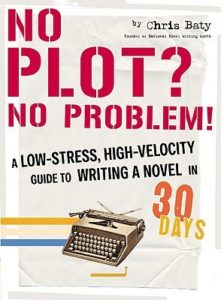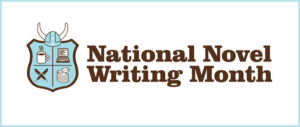Asking an author about their pre-writing process, in some ways, is like asking them what color their underwear is. While it’s an interesting conversation starter, the answer is really personal. I know authors who do a full bio sheet for each character, and others who just keep it all in their head. Me, I write massive and slightly strange outlines.
The way I learned to write outlines back in grade school was the typical bulletpointed lists with headings and subheadings. That’s great for some people but it’s too vague for my needs. You see, because of a childhood illness I have a chemically rewired brain. All that rewiring made my memory a little wonky. I can remember the most trivial details of a conversation I had three years ago, or the exact placement of a particular book on my shelves. But remembering what I meant by “Morpheus starts a fight” isn’t quite enough to tell me what kind of fight I’d intended for that scene or even who he’s supposed to fight. If it’s an early chapter, yeah the chances are good that I’ll remember. However, when I’ve put 10,000 or more words down, too much time has passed for me to recall every little detail. Plus I found that putting all of those little details in subheadings is visually annoying to me. In addition to that, my theater experience taught me how powerful a few key words can be when I’ve forgotten what my next line is. With all of that in mind, what I do instead is this:
(If you haven’t read The Moonflower, there’s spoilers ahead)
Chapter 13
Ariana’s class goes on an outing to the Louvre. Mr. Talbott takes them through an unmarked side door and takes them down to the basement. One of the students asks how he got permission to come down here. While down there, Ariana finds an old carved stone frieze from ancient Greece laid out on a work table. It’s one of Sair’s. She recognizes it from his workroom. She decides that she needs to know more. She runs home and re-enters the Demos Oneiroi in order to find him and learn more.
Chapter 14
Ariana enters the dream. She searches for him in the field first, then checks all of the landscapes that they’ve visited before, but doesn’t find him. She is frustrated and scared for him. She tries to think of how he would search for her and remembers that he pops in and out of places at will. She concentrates hard on Sair and tries to will herself to his location. When she opens her eyes she is in a white marble Greek temple. A blindfolded woman dressed in white walks up and asks if she can be of any assistance. Woman is Dikaiosyne, the spirit of justice. Ariana meets Phobetor and Phantasos. Zosime is thrilled to see Ariana again and brings her in to see Sair. She says that she’s looking for Sair and the attendant escorts her without any difficulty.
I’ve found that a paragraph style outline is a lot more helpful to me. I can fill it with as many details as I like and since I’m the only person who sees it I can use run on sentences, poor grammar, wrong punctuation, leave out punctuation, use colloquialisms and slang…pretty much whatever I feel will give me the right cues. Sometimes the outline paragraph is only three or four sentences, and sometimes it’s half a page. I just keep writing until I get the full scene mapped out. I’ve even been known to put things in my outline that usually have no business being in an outline. Things like character descriptions or a song with the right tempo and mood for the scene that I need to play in the background. That doesn’t stop me from adding them because it’s a cue that I’ll need later.
I also don’t outline the entire book. I outline all of the major/really important chapters, whatever minor chapters I can think of, and then put all of those events in linear order. If I know what chapter 9 and 11 need to be but not exactly what comes between I’ll leave empty chapter headings and fill it in later. All of this though usually only covers about 2/3 of the book. It never fails that once I get about a third of the way into a manuscript I think of another cool twist or two that adds more depth and/or character development or I finally figure out what is supposed to be in a hole I left so I purposely leave room for those additional chapters.
Yes, there’s nothing unusual about that. I realize that many writers outline this way or in a way that’s very similar to this. But this is only half of my outlining process. What I do with that outline is where it gets unusual.
I’m a disciple of Alton Brown in that I like tools that can multitask and that’s exactly what my outline does. You see, there’s a reason that my outline is in bold. When I’ve finished typing out my outline, the very last thing I do before I start writing the book is make a second copy. The first copy of the outline stays in a file, pristine and untouched so I can refer to it when I’m working on subsequent books. The second copy is what becomes my manuscript. You read that right. I write the book in the second copy of my outline, right under the outline paragraph. When I’ve completed one of the items in the outline I delete it. That way I don’t have to re-read what I wrote the previous day in order to figure out where I’m at. I can look at what’s left of the outline for that chapter and immediately know where I left off. Life is crazy and NaNoWriMo in particular is crazy. Some days I only have thirty minutes to write and I can’t spend that time re-reading. This makes it so much easier for me to jump right into it so I can make the most of the time that I have. (It’s another reason that having the right cues in my outline is so important to me.)
So many pre-writing tools are single purpose but if you’re an outliner there’s no reason why it can’t serve multiple purposes and be adapted — even Frankensteined — to be tailored to your exact needs. Besides, it’s just a tool. It doesn’t have to be pretty. It just needs to do the job efficiently.



